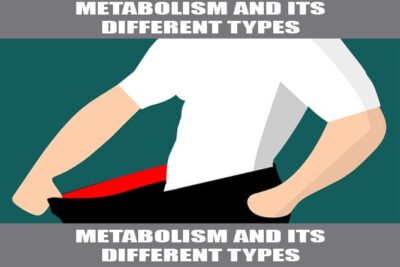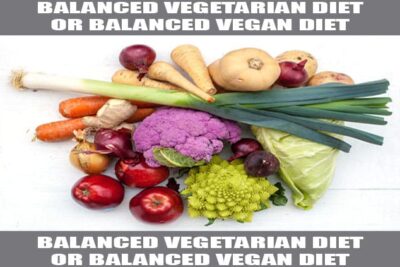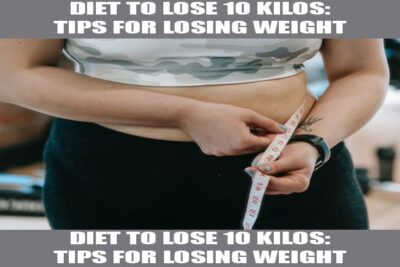
Ketogenic Diet: A Beginner's Guide to Keto
The ketogenic diet is a way of eating low in carbs and high in fats. It helps your body use fats for energy instead of carbs. This state, called ketosis, promotes fat burning and has many health benefits, like weight loss and better insulin control.
It was first used in the 1920s to treat epilepsy. Now, it's being studied for its effects on diabetes, neurological issues, and even cancer treatment.
By eating fewer carbs—usually 20 to 50 grams a day—and more fats, you help your body get into ketosis. The typical keto diet is 70% fat, 20% protein, and 10% carbs. This keto guide will give you key tips for starting and enjoying the ketogenic diet.
Starting this diet means following some important rules and knowing its effects. Let's look at the basics of the beginner keto diet and its many keto benefits.
What is the Ketogenic Diet?
A ketogenic diet is a way of eating that focuses on high fats and low carbs. It helps the body enter a state called ketosis. In ketosis, the body burns fat for energy, making ketones as a result.
The standard ketogenic diet has about 70% fats, 20% proteins, and only 10% carbs.

Keto Diet Basics
Starting a ketogenic diet means cutting down carbs and eating more fats. This makes the body use fat for energy. The standard ketogenic diet is the most common, aiming for a balance that leads to ketosis.
There are other versions, like the high-protein keto diet, which has more protein for muscle growth. The cyclical ketogenic diet includes days with more carbs but stays mostly low-carb.
Macronutrient Ratios
The right mix of macronutrients is key for a ketogenic diet. For a 2,000-calorie diet, this means about 167 grams of fat, 100 grams of protein, and 25 grams of carbs. This balance helps the body use ketones instead of glucose for energy.
Research shows that in the first 3 to 6 months, people might lose weight faster than on other diets. Ketogenic diets may also help with epilepsy, Alzheimer's, and improve muscle-to-fat ratio in athletes.
How Does the Ketogenic Diet Work?
The ketogenic diet cuts down on carbs and boosts fat intake. This change leads to ketosis, a state where your body burns fat for energy. Your liver turns fats into ketones, which fuel your brain and body.

Understanding Ketosis
Ketosis happens when your body uses fats for energy instead of carbs. It starts when you eat fewer carbs. This shift can be sped up by fasting.
By eating the right mix of foods, you can stay in ketosis. This mix is mostly fats, some proteins, and a few carbs. Being in ketosis improves your mental focus and boosts your metabolism.
Benefits of Ketosis
Ketosis offers many health benefits. It helps you lose weight, mainly around your belly. It also improves insulin resistance, which is good for people with type 2 diabetes.
This diet can also lower heart disease and metabolic syndrome risks. It has been used to treat epilepsy for decades. But, it's important to watch out for side effects like the keto flu, which includes headaches and fatigue.
In short, the ketogenic diet is key to better metabolic health and energy. It offers many benefits backed by science.
Foods to Eat and Avoid on the Ketogenic Diet
Starting a ketogenic diet means you need to plan your meals carefully. You should eat less carbs and more high-fat foods. This helps keep your body in ketosis. Here's a list of foods to eat and avoid to make meal planning easier.
Keto-Friendly Foods
Choosing the right foods is key for a low-carb diet. A ketogenic diet limits carbs to 20–50 grams daily. Focus on these high-fat and low-carb foods:
- Meats: Beef, chicken, pork, and lamb have no carbs and are great for protein.
- Fatty Fish: Salmon, sardines, and mackerel are full of omega-3 fats, which help with blood sugar.
- Cheeses: Most cheeses are high in fat and have no carbs, making them perfect for keto.
- Non-starchy Vegetables: Broccoli and spinach have less than 8 grams of net carbs per cup.
- Nuts and Seeds: Almonds, walnuts, sunflower seeds, and hemp hearts are rich in healthy fats and fiber.
- Oils: Use oils like coconut oil and olive oil, which are full of healthy fats.
- Dairy: Butter, heavy cream, and plain Greek yogurt have about 8 grams of carbs per serving.
- Low-Carb Fruits: Berries like blackberries and raspberries are low in carbs and high in fiber.
- Beverages: Stick to plain coffee, tea, and unsweetened sparkling water, as they have no carbs.
It's also important to know what to avoid on your keto diet:
| High-Carb Foods to Avoid | Carbs Content (Approx.) |
|---|---|
| White Sandwich Bread | 13 grams per slice |
| Cooked White Pasta | 33 grams per cup |
| Cooked White Rice | 26.5 grams per 1/2 cup |
| Sweetened Yogurt | High in added sugars |
| Bananas | Over 20 grams per medium banana |
| Honey | 17 grams per tablespoon |
| Maple Syrup | 13 grams per tablespoon |
| Cola | 39 grams per 12-ounce can |
| Potato Chips | 14 grams per 1 ounce |
| Sweet Potatoes | 20 grams per medium potato |
The ketogenic diet and Weight Loss
The ketogenic diet is known for its weight loss benefits. A 2013 study by Bueno and colleagues found it better than low-fat diets for losing weight. Many studies have shown that low-carb diets lead to more fat loss than low-fat diets.
This diet works by making the body burn fat for energy, not carbs. It also keeps you full because of its high fat and protein content. This makes it a great choice for losing weight.
People with type 2 diabetes see big improvements on a keto diet. A 2017 review found that low-carb diets help manage diabetes well. They lead to more weight loss and less need for insulin.
The diet also helps control hunger, which is key for losing weight. A high-protein keto diet has been shown to reduce hunger and help keep weight off. Studies have shown that people on a keto diet lose more weight than those on a low-fat diet.
"In one study, people on a ketogenic diet lost 2.2 times more weight than those on a low-calorie, low-fat diet."
The keto diet also improves how the body handles insulin and blood sugar. A study found that insulin sensitivity improved by 75% and blood sugar levels dropped a lot after two weeks.
| Diet Type | Weight Loss (pounds) |
|---|---|
| Low-Carb | 15.2 |
| Low-Fat | 4.6 |
Lastly, a high-protein keto diet is good for treating obesity. The ketogenic diet is proving to be a strong tool for losing weight. It offers more benefits than traditional low-fat diets.
Conclusion
The ketogenic diet is becoming popular for its benefits in weight loss and health. It focuses on eating lots of healthy fats, some protein, and very few carbs. This helps the body use fat for energy more efficiently.
Creating a keto plan that fits you can greatly improve your health. Studies show it can help with weight, blood pressure, and more. But, it's important to watch out for side effects and get help from doctors, if needed.
Even with its benefits, it's key to think about the keto diet's long-term effects. Some research shows it might raise bad cholesterol levels. Also, eating too much of certain foods can be risky. It's important to choose high-quality foods on a keto diet.
In summary, the keto diet can be a good choice for a healthier life. But, it needs careful planning and help from health experts. With the right approach, it can be a lasting way to improve your health.
FAQ
What is the ketogenic diet?
The ketogenic diet is a diet low in carbs and high in fat. It helps the body enter a state called ketosis. In ketosis, the body burns fat for energy instead of carbs, leading to weight loss and better health.
How does the ketogenic diet promote weight loss?
It promotes weight loss by cutting down carbs to 20 to 50 grams a day. This makes the body use fat for energy. It also makes you feel full, helping you eat less without counting calories.
What foods should be avoided on a ketogenic diet?
Avoid foods high in carbs like sugary items, grains, most fruits, legumes, and tubers. Eat meats, fatty fish, nuts, oils, and low-carb veggies to stay in ketosis.
What are the benefits of the ketogenic diet for metabolic health?
It can improve metabolic health by making your body more sensitive to insulin. This helps manage conditions like type 2 diabetes and metabolic syndrome.
How can I ensure that I am in ketosis?
Use blood, urine, or breath tests to check ketone levels. Intermittent fasting and sticking to a low-carb diet can also help you get into ketosis faster.
Are there variations of the ketogenic diet?
Yes, there are different types. The standard diet is 70% fat, 20% protein, and 10% carbs. There's also a high-protein version and a cyclical diet with carb refeeds.
Is the ketogenic diet safe for everyone?
It's good for many, but not everyone. People with health issues or dietary restrictions should talk to a doctor before starting.
What is the significance of nutrient density in the ketogenic diet?
Nutrient density is key to getting enough vitamins and minerals on a low-carb diet. Eat nutrient-dense foods like veggies, nuts, seeds, and quality meats to stay healthy on keto.
Can the ketogenic diet improve mental clarity and cognitive function?
It might help your mind work better by providing ketones for brain fuel. This can improve focus and concentration for some.






























Content that may interest you